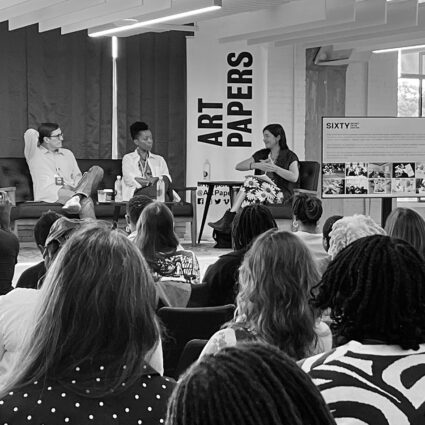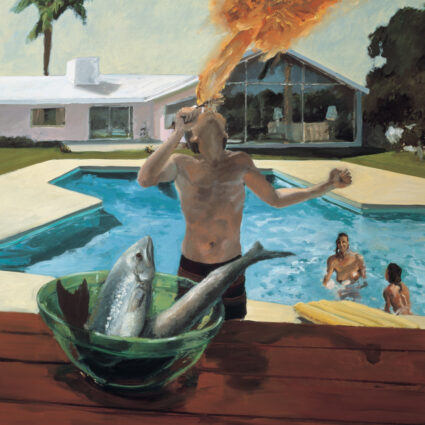Eco Build Lab co-founder, earthship builder, and educator Kirsten Jacobsen describes the environmental factors integral to green building construction and action.

TAOS, NM—The orange and red splash of native aspens is a visual sign of the completion of the hot, dry summer in Northern New Mexico. Golden leaves and umber pine needles bathe hiking trails before the onset of the powdery frost, which hugs the desert and perennial sagebrush ahead of winter. Then comes the deep freezes and, in the spring, the thaw.
Despite extreme climate shifts and sometimes fifty-degree swings in a single day, the pine trees remain unafflicted. My mother learned from close Taos Pueblo friends that certain attention should be paid to the pine because it doesn’t enter into dormancy like other shedding foliage. The plant life hordes an ever-present life force. In the same way, homes, particularly sustainable dwellings, can also be equipped with harmonious qualities gleaned from nature.
“My favorite thing is living in a building where it’s an exchange and a symbiotic relationship [to be able to take] resources that are provided by nature, adding just enough technology that you can also have wi-fi at the same time,” says earthship builder and owner Kirsten Jacobsen, a co-founder of Eco Build Lab. “It’s ancient principles with modern technology.”
Taos Pueblo, first outfitted with electricity just over fifty years ago, lives primordially raw with the earth. Contemporary sustainable homes, by comparison, pattern different innovations, which Jacobsen has put into practice for more than twenty-five years. Jacobsen says that Taos’s traditional adobe structures owe not only their aesthetic imitations but also construction knowledge to Taos Pueblo.

“I think it’s amazing,” says Jacobsen. “You have to look at the fact that we’re so lucky to have a living example at the Pueblo, people that lived self-sufficiently [and] continuously for over 1,000 years… somewhere around 40 percent of people worldwide live in earthen buildings and so having that history here, I think, influences a lot.”
In 2011, she co-founded the Earthship Academy, which provides a sustainable action curriculum (both hands-on and online learning) for those interested in adapting to current ecological circumstances for modern, self-sustaining homes. Eco Build Lab, which Jacobsen co-founded with Ashton Wolfe in 2018, provides education and vocabulary for the curious builder, and essentially creates a required menu for off-grid living.
“You need a building with a good performance building envelope, a roof that sits suitable for harvesting rainwater, a way to store the water, you always filter the water, a way to collect power, a way to store power, a way to use it efficiently,” explains Jacobsen. Eco Build Lab also provides consulting, primarily in new construction.
While many Taos houses are fashioned through a natural build of regional, earthly materials, they’re not necessarily energy and resource optimized.

Water is an obvious essential. While Taos Pueblo is situated by a branch of the Rio Grande River, other communities rely on groundwater supplies—locally, Jacobsen mentions earthship pioneer and builder Michael E. Reynolds, who championed a solar-powered pump. However, the technology is “still expensive, it’s still groundwater [and uses] a bunch of electricity to bring the water out of the ground,” says Jacobsen, who adds that it’s sometimes not possible to drill into the earth to install a pump. In its stead is rainwater harvesting, which is outfitted in many alternative, green builds.
Unlike the stable cold of New England and even Alaska, Taos (elevation: 7,000 feet) and its intensified ultraviolet rays, deep freezes, and quick thaws can crack concrete and wood, and that’s why adobe houses are the regional norm. The adobe may be further optimized with passive solar design, following ancient knowledge going back to “solar-oriented cave dwellings where people understood that the earth was going to provide constant temperature, but the sun is going to heat it up,” says Jacobsen.
With this in mind, Jacobsen, who cites California’s grid outages as an example, explains the need to work in conjunction with the land and the elements.
“For all sorts of reasons, when it’s windy, [utility companies] turn [off the grid] because the poles get knocked over and spark fires that burn out of control, and then California had a huge snowstorm in Lake Tahoe, and the grid was down for sixteen days,” she says. In 2018, California lawmakers passed a mandate requiring that all new single-family, in addition to multi-family structures up to three stories in height, must include solar panels starting in 2020.

Eco Build Lab considers grid failures in the planning process while promoting a symbiotic relationship with the natural environment. “I take a shower and the plants and flowers grow. The plants give oxygen, and I’m breathing out carbon dioxide,” says Jacobsen. “You’re happy when it’s sunny because it’s heating up the house and you’re getting solar power, and you’re happy with rain because you’re collecting water.”
“[The idea is] to build or retrofit in a way that you provide all your own power, you harvest all your own water, you treat all your own wastewater, and engage with the environment and climate around it,” adds Jacobsen. “The design is meant to be as thermally efficient and passive as possible.”
Jacobsen doesn’t stop at the concept of sustainability, which has become a buzzword in our climate-changed reality. “Regeneration is a step beyond sustainable,” she says. “Sustainable just means maintaining, whereas regeneration is renewable… having your life improve the earth instead of just taking from it.” In this way, earthships create an ever-present life force, much like the pine tree, which promotes vitality through all the seasons.




